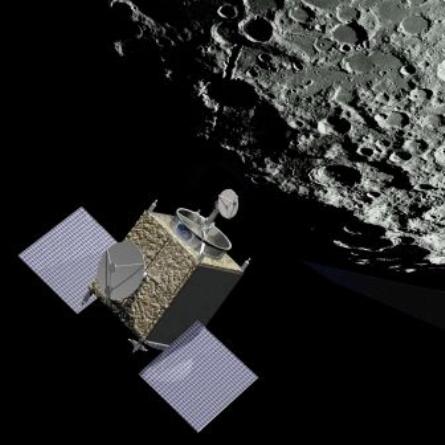NASA is developing a lunar positioning system satellite constellation that would enable its Altair Lander to touch down at a Moon base with 1m (3.2ft) accuracy.
As part of its lunar exploration architecture, the US space agency has a twin-satellite concept for delivering communication and navigation services to a Moon base and its vehicles, with two different orbit options.
For both options, constellations A and B, two Lunar Relay Satellites (LRS) would operate in 12h orbits at an inclination of 57.7°. In the constellation A option, the spacecraft would be in the same plane to provide single-hemisphere coverage, with one LRS acting as a spare. In the constellation B option, the LRSs would be in orthogonal planes, which means both hemispheres would be covered by the two satellites.
"The LRS...will require space-qualified, high-speed routers capable of supporting multiple 100Mbps network interfaces high-speed radio-frequency links. The router will need to support processing/routing at a minimum of 350-500Mbps," says NASA.
|
|---|
Above: This image shows a NASA concept for its planned Lunar Relay Satellite |
The LRS would have a total mass of 1,120kg (2,400lb), require 1.04kW of power, have a seven-year design life and carry gimballed Ka- and S-band antennas for two-way cislunar communications for up to five users. For its own attitude control and navigation the LRS will use four reaction wheels, 12 sun sensors and two star trackers. The LRS could be launched by a United Launch Alliance Boeing Delta IV medium or Lockheed Martin Atlas V-401.
Source: Flight International
























